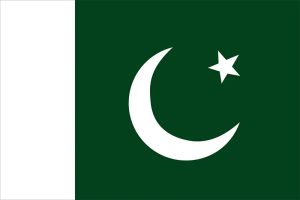Information about Pakistan
Tags: 2024 about pakistan, 2024 Pakistan, information, pakistan

Pakistan is a diverse and historically rich country located in South Asia, sharing borders with India to the east, Afghanistan and Iran to the west, and China to the north. With a population exceeding 220 million people, it is the world’s fifth-most populous country. This essay will provide an overview of Pakistan’s geography, history, culture, economy, and current challenges.
Geography:
Pakistan’s geography is diverse, featuring mountain ranges, fertile plains, deserts, and a coastline along the Arabian Sea. The Northern Areas, including the famous Karakoram Range, boast some of the world’s highest peaks, including K2. The Indus River, one of the longest in the world, flows through the country, providing water for agriculture and sustaining a rich ecosystem.
History:
The region that is now Pakistan has a deep historical legacy, with ancient civilizations like the Indus Valley Civilization dating back over 4,000 years. Over the centuries, the area witnessed various rulers, including the Mauryas, Guptas, Mughals, and eventually the British Empire. In 1947, Pakistan gained independence from British rule, and the Islamic Republic of Pakistan was established as a separate nation for Muslims.
Culture:
Pakistan’s culture is a vibrant tapestry woven with influences from its diverse ethnic groups, including Punjabis, Sindhis, Pashtuns, and Baloch. Urdu is the official language, but there are several regional languages such as Punjabi, Sindhi, Pashto, and Balochi. Pakistan’s rich cultural heritage is evident in its traditional music, dance, art, and literature. The nation is known for its traditional music forms like qawwali and ghazal, and its literature has produced renowned poets like Allama Iqbal and Faiz Ahmed Faiz.
Economy:
Pakistan has a mixed economy with agriculture, manufacturing, and services sectors. Agriculture plays a crucial role, employing a significant portion of the population. Major crops include wheat, rice, cotton, and sugarcane. The manufacturing sector produces textiles, garments, and pharmaceuticals. Additionally, services like information technology and remittances from overseas Pakistanis contribute significantly to the economy. However, the country faces economic challenges, including inflation, unemployment, and external debt.
Challenges:
Pakistan confronts various challenges, including political instability, terrorism, and energy shortages. The relationship with neighboring India, particularly regarding the Kashmir issue, remains a source of tension. Additionally, the country grapples with issues related to education, healthcare, and infrastructure development. Balancing economic growth with social development is a continuous challenge.
Current Affairs:
As of my last knowledge update in January 2022, Pakistan is navigating the complexities of regional geopolitics. It continues to play a role in the Afghan peace process, given its proximity to Afghanistan. Efforts to address economic issues, such as reforms and seeking foreign investments, are ongoing. The country remains a key player in the Islamic world and an active participant in international forums.
In conclusion, Pakistan is a country with a rich history, diverse culture, and a blend of challenges and opportunities. Its strategic location and cultural richness make it a nation of significance in South Asia and the broader global context.